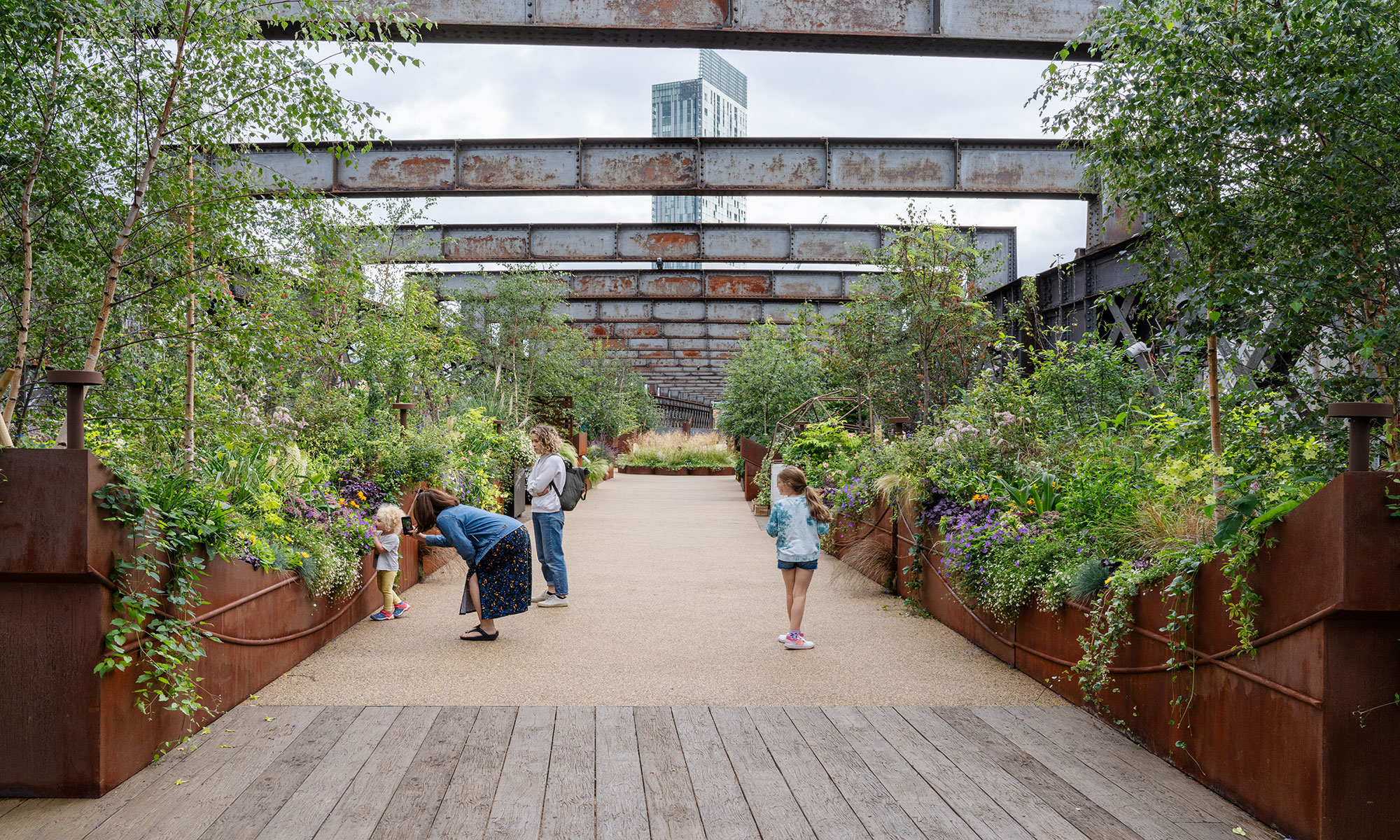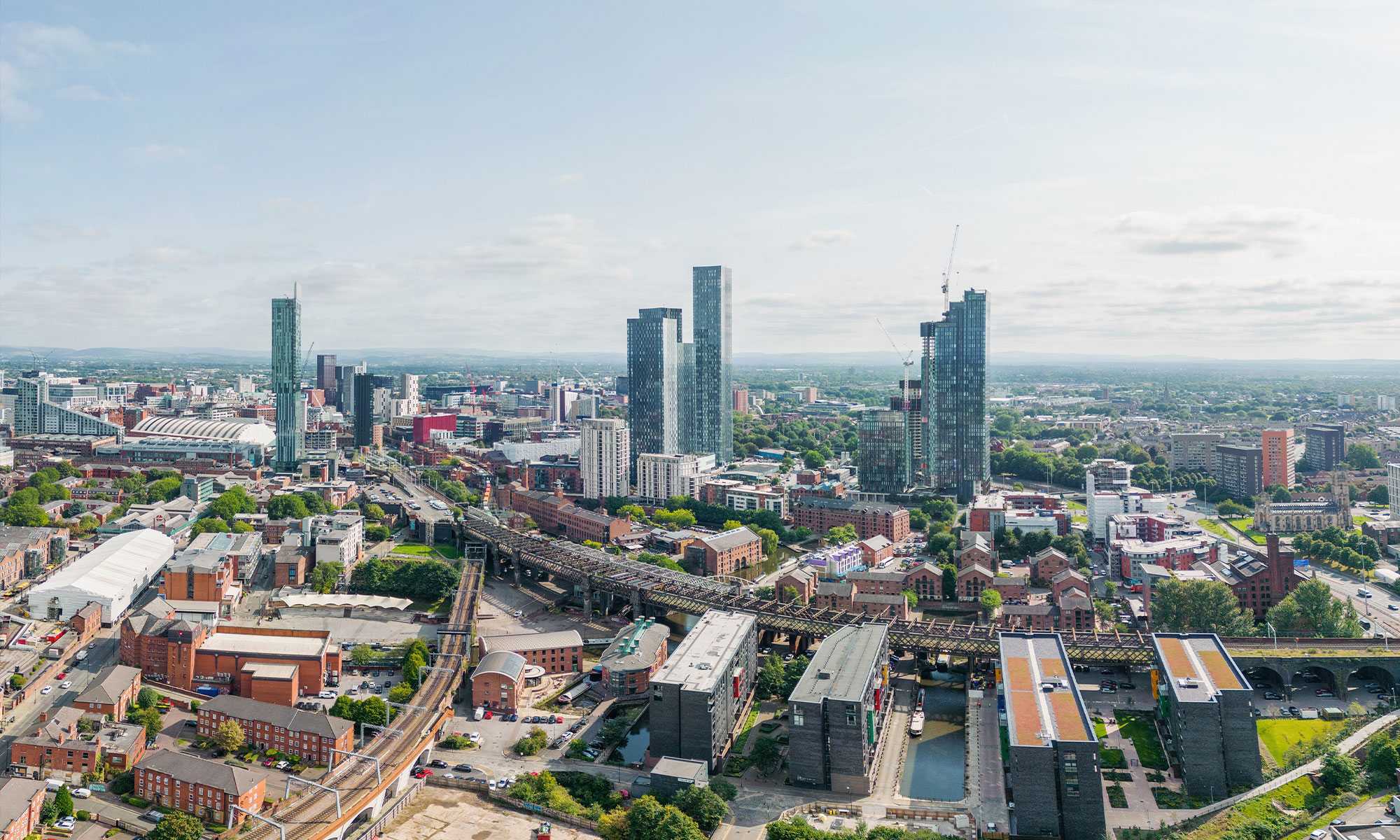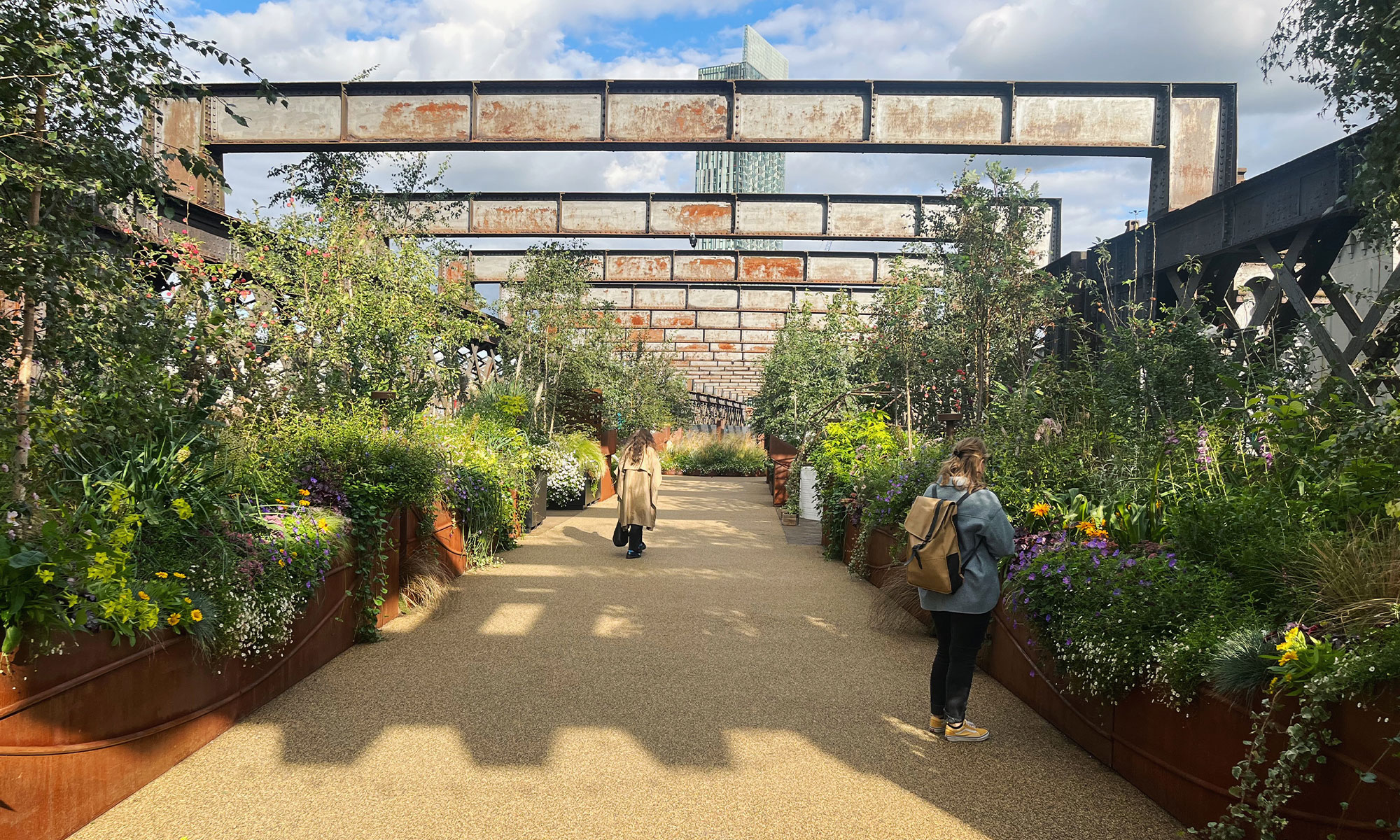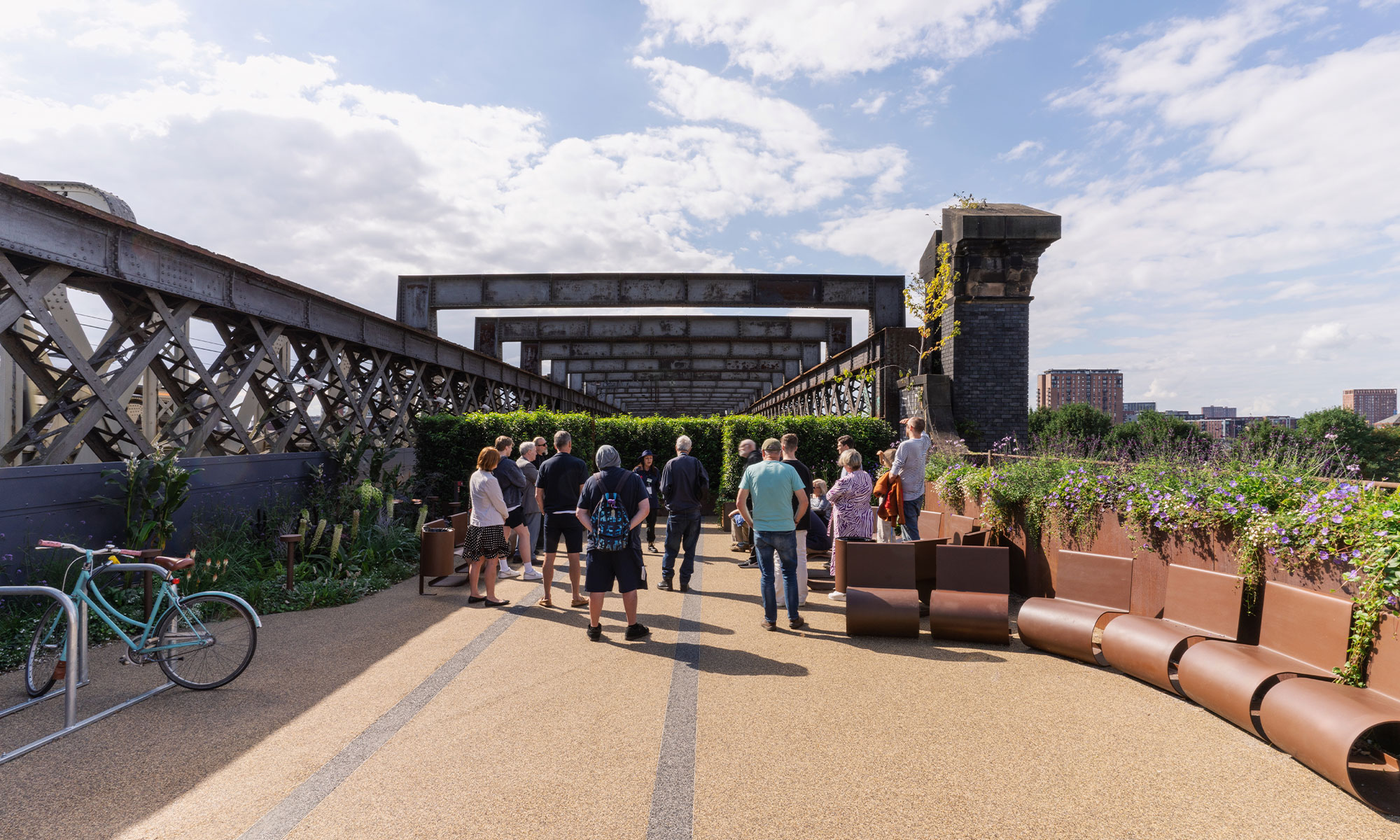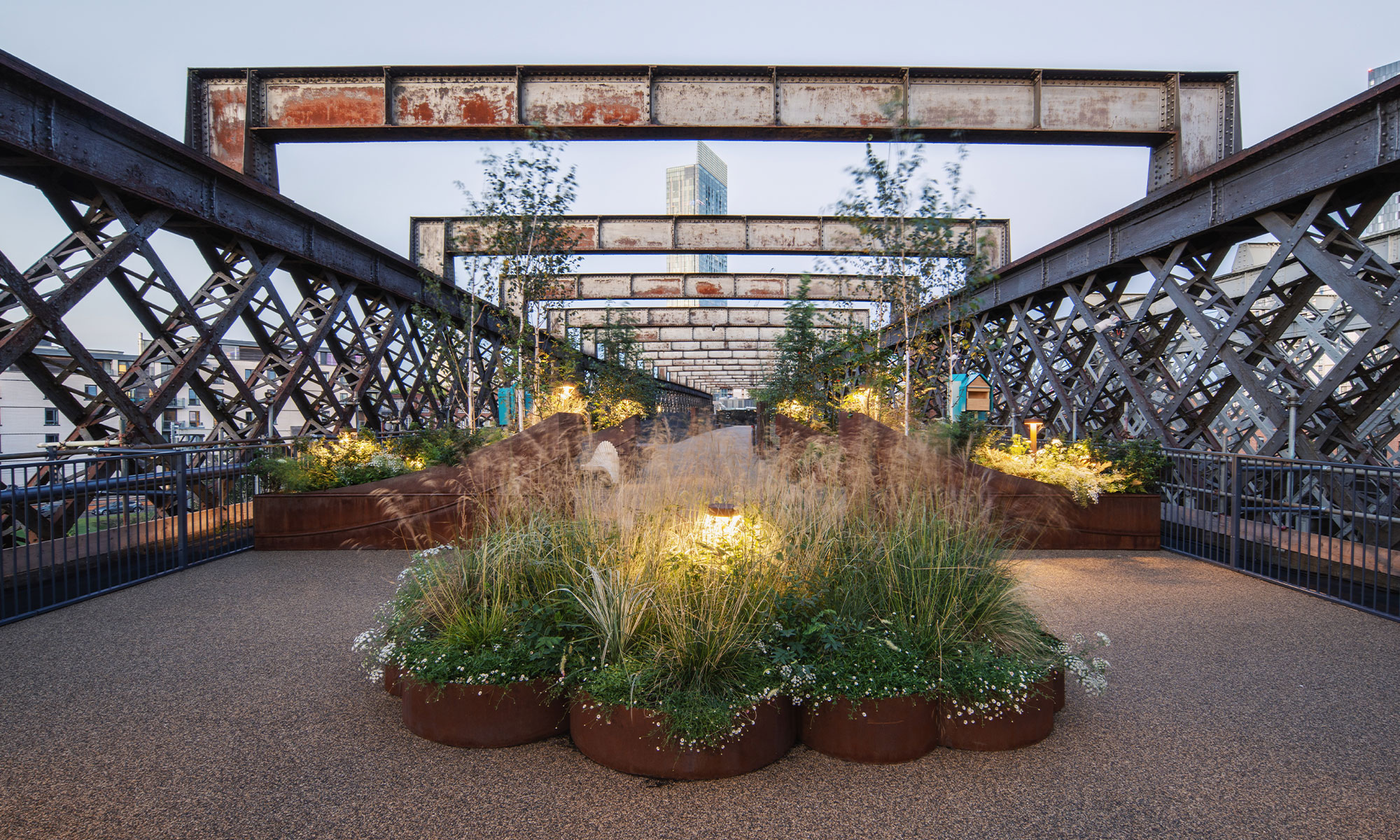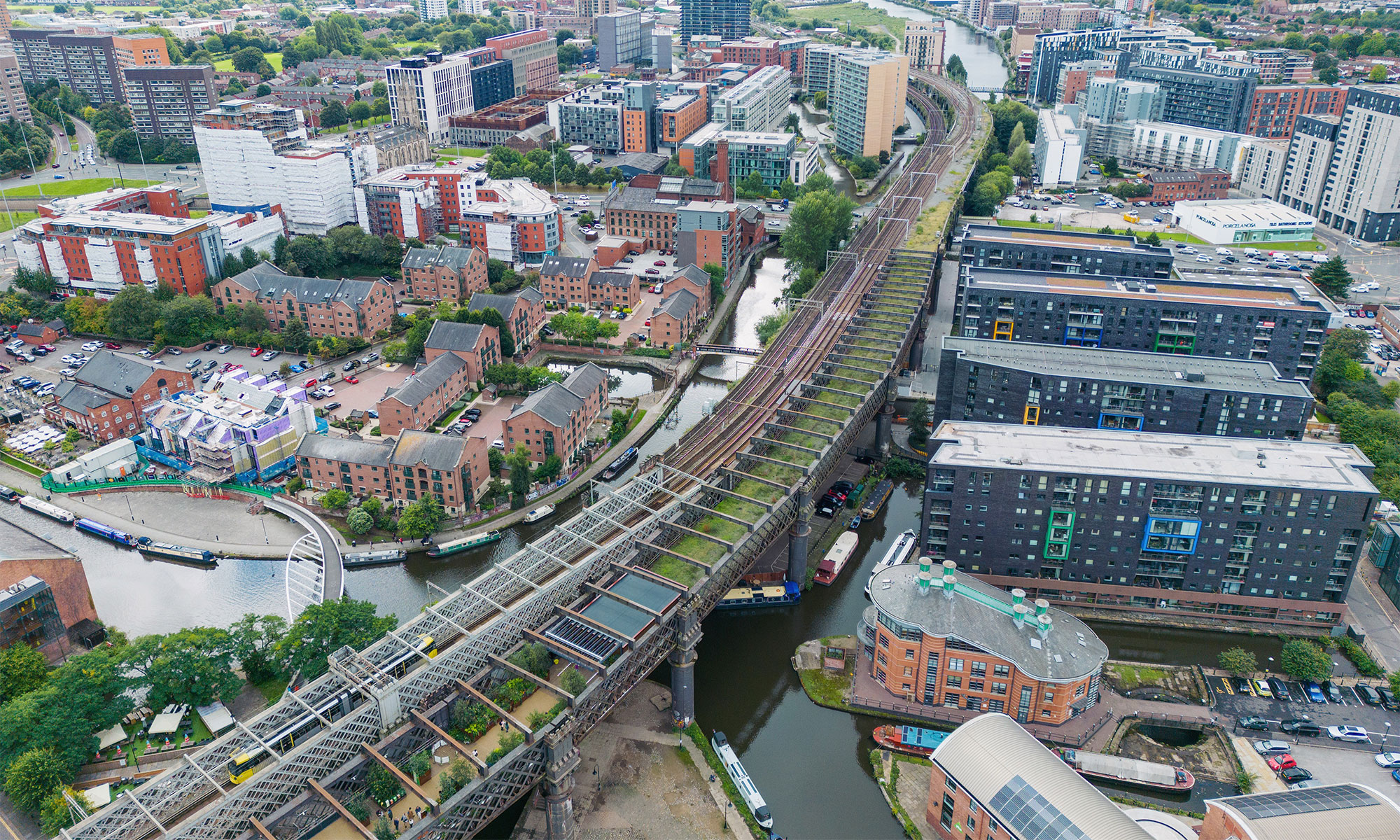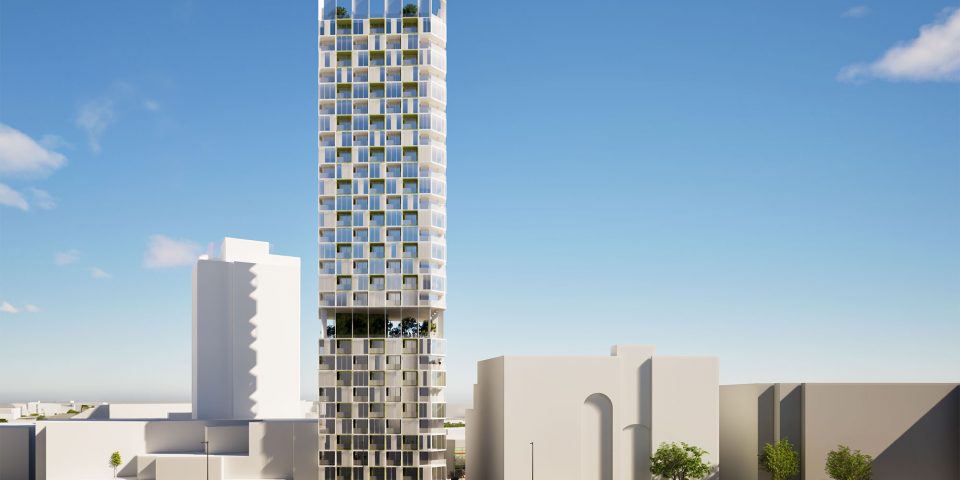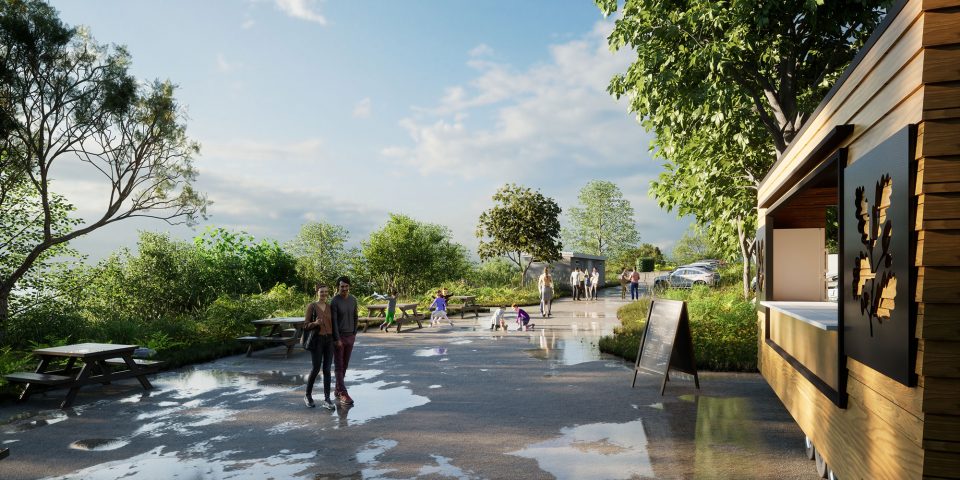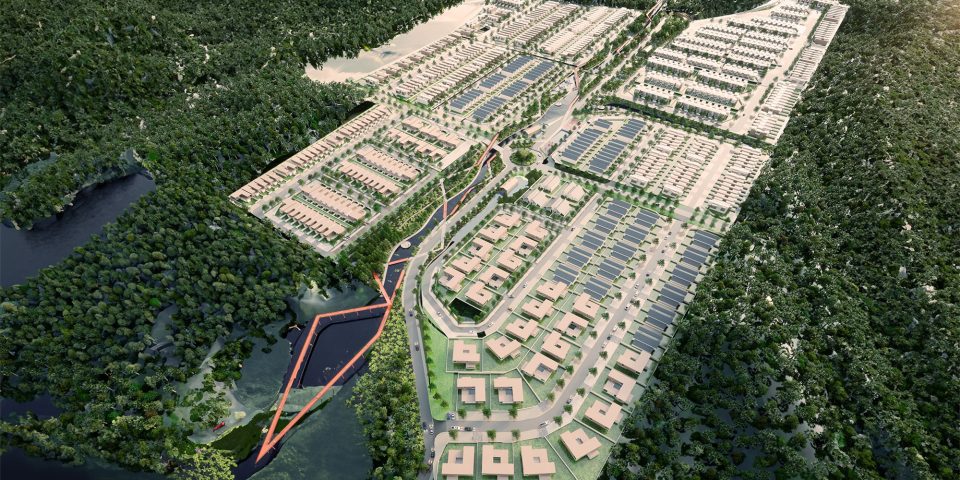Castlefield Viaduct
| Location: | Manchester |
| Area: | 4,950m2 |
| Client: | National Trust |
| Service: | Lead Consultant, Architecture, Masterplanning, CGI, Stakeholder Engagement |
| Status: | Completed |
Castlefield Viaduct, a Grade II Listed viaduct dating back to Victorian times, has been restored and reinvented in a pilot scheme led by the National Trust and designed by Twelve Architects. The pilot seeks to marry the city’s proud industrial heritage with a modern urban park concept. Once used to transport goods, the viaduct has been transformed into a green space that is accessible for all. Since its opening, members of the community have been given the opportunity to experience the park first-hand. Their feedback will shape the vision for the second phase of the project: the permanent regeneration of the viaduct.
Built in 1892, the Viaduct was used to transport goods in and out of Manchester and stayed in use until 1969. Despite the continual growth of the city, the viaduct stood unused and unchanged. The transformation of the viaduct into a free-to-access park reclaims its place in the city, celebrating its part in Manchester’s past, present and future.
One of the primary architectural challenges was to transform a hard, metal structure into a soft green oasis, complimenting the historic fabric and landscape. The birthplace of the industrial revolution, Manchester’s rich manufacturing history is visible throughout the city. By utilising its heritage assets to revitalise communities, the scheme delivers a positive social impact on multiple levels; bringing a disused historic structure back into use, introducing urban greening to the city centre and helping to increase access to outdoor space are all objectives that underpin our design solution.
The project is unique in its focus on the past, present, and future. Visitors are invited on a journey to experience the pilot scheme through three curated zones, starting with a welcome area. A living wall green screen opens to reveal a stretch of the viaduct in its ‘existing form’; stark and imposing. Minimal architectural or landscaping intervention allows the existing structure to be showcased, as visitors are invited to imagine its future.
The existing viaduct then leads to the ‘secret garden’ area, where plants are housed in freestanding, modular planters made from red Corten steel, reminiscent of Manchester’s iconic red brick buildings. Taking direct inspiration from the Viaduct’s history as a railway structure, the placement of the planters reference the effect of objects rhythmically passing, appearing and disappearing, as they would when travelling by train. Spaces between the planters frame the long-distance views of the surroundings.
This area also features a growing area and ‘Partner Plots’, where local organisations can exhibit their work, from community growing initiatives to art installations and performances. Finally, an indoor events space shrouded in foliage will offer views of the west end of the structure, which will be left completely untouched – a window to the past.
Developed with sustainability in mind, the park demonstrates the National Trust’s commitment to protecting nature and the historic environment, which remain under threat. Efforts were in place to measure and reduce operational waste and carbon emissions, and the overall scheme achieved an excellent embodied carbon score. Over 80% of the materials used on site are designed to be demounted and re-used and were sourced to meet National Trust criteria for responsible procurement and to avoid wastage. Very little construction took place on site, and any building waste was recycled where possible. The design also incorporated energy efficient elements such as LED lighting and rainwater harvesting for irrigation. The Viaduct is accessible by foot, bicycle or public transport, which minimises the carbon impact of visitor travel.
The scheme rescues and celebrates a significant historic asset, giving it a new life and a sustainable future. By doing so, the project also re-uses thousands of tonnes of embodied carbon used to build the structure in the 19th century.
The green space, which is maintained by National Trust gardeners and volunteers, invites visitors to engage with nature and learn about gardening, whilst creating new ecological habitats for birds and pollinators. New species have been noted since planting, including house sparrows and a sparrowhawk.
The park creates the possibility of a healthier neighbourhood for the 50,000 residents living within walking distance of the site, many of whom are from the most deprived 50% of communities in Greater Manchester. Responding to a need raised by the pandemic, the pilot scheme addresses inequalities in access to nature in urban areas and city centres like Manchester, by providing an opportunity for people to enjoy the health and wellbeing benefits of green spaces. Fitting in with existing initiatives in the city, the viaduct also creates a new walking route to support active travel.
The scheme has received a widely positive response from the public, who have shaped and activated the space. The pilot scheme has provided substantial benefits to society, positively impacting factors such as, health and wellbeing; tourism; biodiversity and nature; active travel; culture and heritage; regeneration; learning; community and green jobs.
Community engagement is at the heart of the pilot scheme, which engages volunteers and delivers an inclusive programme of community activities and events, on and off site. It also creates broader partnerships with organisations in the city, showcasing local initiatives such as installations, performances, and community growing plots.
